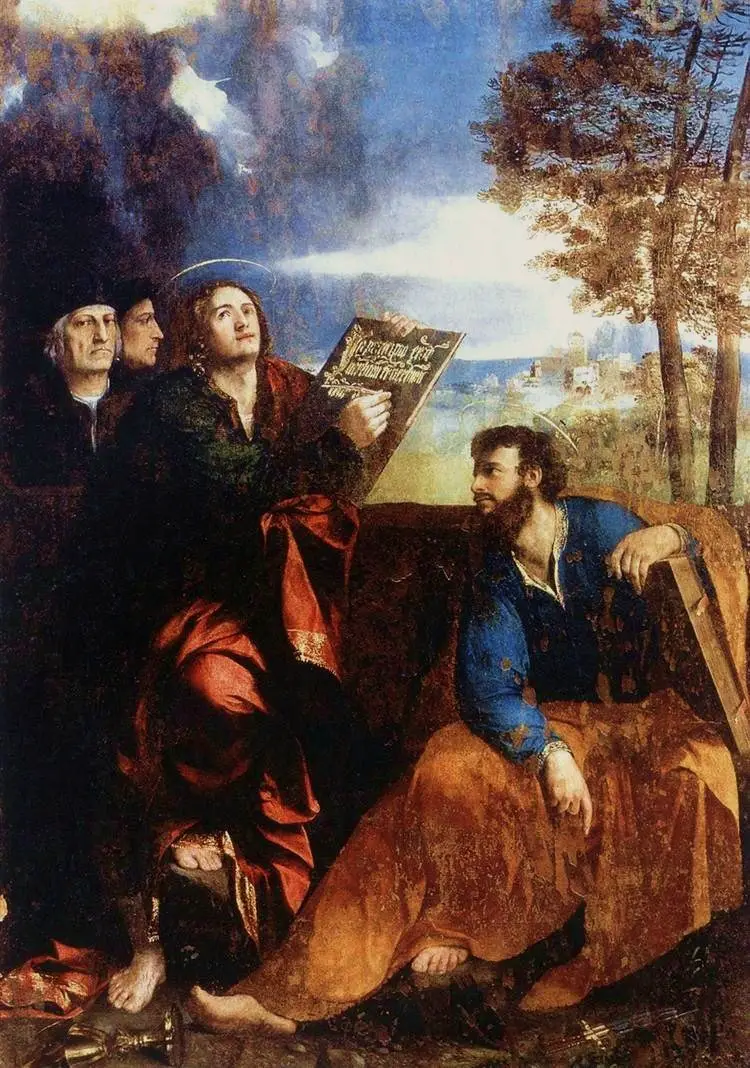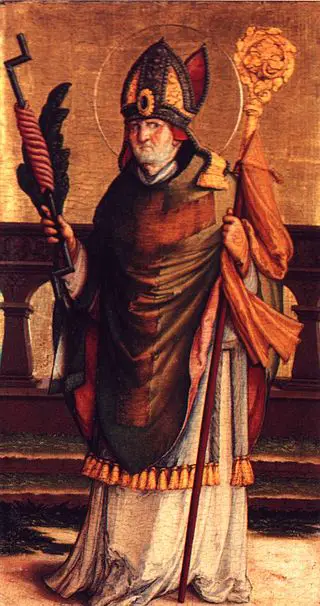2 July – Visitation of the Virgin
The Visitation of the Virgin was a feast day commemorating the pregnant Virgin Mary visiting her cousin Elizabeth, who was pregnant with John the Baptist. This visit was recorded in the Book of Luke and Luke records how the baby in Elizabeth's womb “leaped” when Elizabeth heard Mary's greeting and that “Elizabeth herself was filled with the Holy Ghost; so that she cried out with a loud voice, Blessed art thou among women, and blessed is the fruit of thy womb.”
15 July – St Swithin's Day
St Swithin's Day commemorates the 9th century Saxon bishop, Swithin, who was chaplain to Egbert, King of Wessex, and the patron saint of Winchester. One miracle associated with him is that of him mending broken eggs. According to the story, an old lady's eggs had been accidentally smashed by workmen working on a church. Swithin picked them up and as he did so they became whole eggs once again.
Swithin died on 2 July 862 but his feast day marks the day in 971 when his remains were moved from his grave just outside the west door of the Old Minster of Winchester to a shrine inside the cathedral. This day was marked by miraculous cures and so became his feast day. It was also, however, marked by torrential rain which lasted forty days and forty nights and which was taken as a sign of the saint's anger at the digging up of his remains when his wishes were that his remains should be buried outside the west door so that rain could fall on his grave and people would walk over it. This forty days of rain led to the following traditional rhyme:
St Swithin's day if thou dost rain
For forty days it will remain
St Swithin's day if thou be fair
For forty days 'twill rain na mair.
So remember to check the weather on St Swithin's Day!
If you believe in praying to saints, then in times of drought St Swithin is the saint to pray to.
Emblems associated with St Swithin are raindrops and apples. According to Charles Raymond Dillon, in his book Superstitions and Folk Remedies, apple growers hope for rain on St Swithin's Day or St Peter's Day (29th June) and see the rain as the saints watering the orchards. Another traditional belief is that rain at this time is St Swithin blessing and christening the apples. A tradition associated with St Swithin's Day is bobbing for apples.
20 July – St Margaret's Day
The 20 July is the feast day of St Margaret of Antioch (also known as Margaret the Virgin and St Marina the Great-Martyr), patron saint of pregnancy and expectant mothers. Although St Margaret was declared apocryphal in 494 by Pope Gelasius I she is still recognised as a saint today and there are many churches in England which are dedicated to her. She is also listed as one of the Fourteen Holy Helpers, saints who are venerated because their intercession is believed to be particularly powerful.
According to legend, Margaret was born in Antioch in the late 3rd century and was the daughter of a pagan priest. She converted to Christianity after being nursed and cared for by a Christian woman and made a vow of chastity. Olybrius, the Roman Prefect or Governor, proposed marriage to her and expected her to renounce her Christian faith, when Margaret refused to marry him and break her vow Olybrius ordered her to be imprisoned and tortured. While she was imprisoned, Margaret was said to have been visited by Satan in the form of a dragon which swallowed her up. Margaret survived her ordeal, escaping from the dragon's side carrying a cross. She was executed by beheading in AD 304.
Images of St Margaret emerging from the belly of the dragon appear in many medieval Books of Hours - see http://britishlibrary.typepad.co.uk/digitisedmanuscripts/2014/07/enter-the-dragon-happy-st-margarets-day.html
22 July – St Mary Magdalene's Day
The Feast of St Mary Magdalene (or Magdalen), “apostle to the apostles” and the woman said to have witnessed Christ's crucifixion and resurrection, has been celebrated on 22 July since the 8th century. In her book Knights Templar Encyclopedia: The Essential Guide to the People, Places, Events, and Symbols of the Order of the Temple, Karen Ralls writes of how, in Medieval times, special fairs were held in Mary's honour on 22 July, how she was the patron of many guilds and how many chapels and buildings were named after her. She was the most widely venerated saint in the Medieval period after the Virgin Mary.
25 July – Feast of St James the Great, Feast of St Christopher
25 July is the Feast of St James the Great (or Greater), the apostle, and of St Christopher the Martyr.
St James was one of the Twelve Apostles and he and his brother John, “the Disciple whom Jesus loved”, were sons of Zebedee, a fisherman. His martyrdom, being executed by sword on the orders of King Herod, is recorded in the Book of Acts. He is the patron saint of Spain and his shrine at the Cathedral of Santiago de Compostela has been a place of pilgrimage for centuries. According to Fisheaters.com, those people who couldn't go on pilgrimage to Santiago de Compostela would build grottoes out of seashells, bits of broken coloured glass, stones and flowers in his honour. It was also traditional to eat Oysters on St James's Day.
Before 1969, 25 July was also the feast day of St Christopher the Martyr, a Canaanite who was executed in the 3rd century AD. Legend has it that Christopher, who was initially named Reprobus, wanted to serve the devil, who he believed to be "the greatest king there was", but on realising that the devil feared Jesus Christ decided to look for Christ. A hermit instructed him in the Christian faith and Christopher performed service to Christ by helping people across a dangerous river. According to the legend, a child wanted to cross the river when it was swollen and at its most dangerous. Christopher carried the child across the river on his shoulders and the said to the child "You have put me in the greatest danger. I do not think the whole world could have been as heavy on my shoulders as you were." The child answered "You had on your shoulders not only the whole world but Him who made it. I am Christ your king, whom you are serving by this work." And then the child disappeared.
St Christopher is known as the patron saint of travellers and today many people wear pendants bearing his image.




Leave a Reply